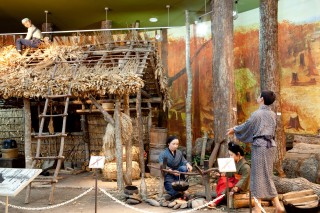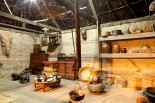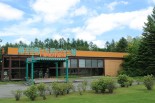Makubetsu Town Furusatokan Museum
From the latter half of the Meiji era to the 40s of the Showa era (1965-75), rice paddy fields were prospering. The paddy fields in the Tobetsu district are indispensable when talking about the history of Makubetsu. The farther of Tokachi reclamation, Mr. Benzo Yoda was called “a person who finally became successful after failing repeatedly,” but his only success was paddy fields on Tobetsu Farm. Seeing an aerial photograph of the time, paddy fields were spreading around the Tobetsu district. The current Acacia housing development was then at the center of rice farming. At the same time, people cultivated paddy fields in the Nishi Sarubetsu district; therefore, our hometown Makubetsu played an important role concerning Japanese staple foods from the beginning of the Taisho era to the postwar era. Precious houses and tools that had been supporting their livelihood are displayed in the Furusatokan Museum. Among the displays, there is a cottage called “Kimarigoya,” where tenant farmers have lived. The original cottage was dismantled and reconstructed here. As 10 or more cottages with a fixed size of 6 tsubo (approx. 20 m2) were constructed, this cottage was named called the “fixed size” (“kimarikitta okisa” in Japanese). The cottages had mud walls so that people could be sheltered from the cold weather in those days. One can also see hoes used to cultivate the fields in the pioneering era, saws and axes to cut the densely growing trees, and batter-churns for churning milk. All materials and daily tools in the Furusatokan Museum are important assets to tell the history.







